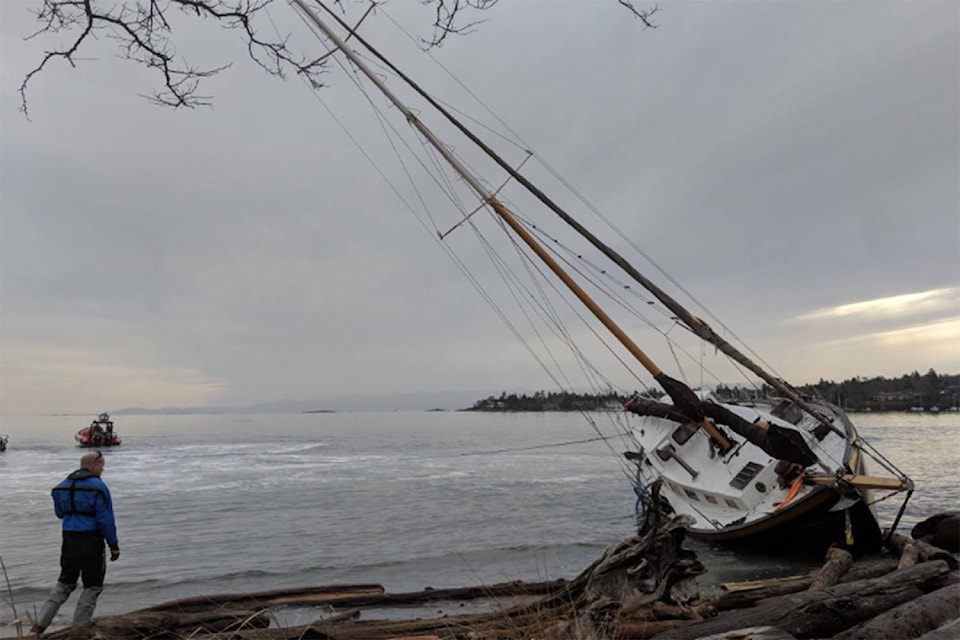Call it the morning after.
Trees, power lines, signs, garbage bins, Christmas lights and other detritus blew wild in Thursday’s windstorm that rocked Vancouver Island and the South Coast of B.C.
Saanich Fire fielded approximately 120 calls to 9-1-1 between noon and 9 p.m. Thursday.
“Dispatch was extremely busy throughout this period and we increased our staffing from two to three dispatchers to support the increased call volume and the numerous incidents crews were responding to,” said Saanich spokesperson Megan Catalano.
Saanich Fire added a crew of one officer and three firefighters to assist with the heavy call load.
“Everyone was busy, widespread chaos, but nothing out of the ordinary beyond the downed power lines,” said Saanich Fire deputy chief Dan Wood.
Sustained gusts topping 100 km/h tore entire trees out of the ground and downed major limbs onto power lines, roads, cars and houses. In many bays boats snapped their anchor lines, or dragged the anchors with them to the shore. Incident responses were spread out across Saanich with downed power lines or debris related issues at Saanich Road near Swan lake, Royal Oak Drive and Old West Saanich Road.
As of 1 p.m. C-Tow and active Cadboro Bay steward Ian Hinkle were partnering to remove a 35-foot sailboat that Hinkle believes has a concrete hull that had washed ashore in the winds.
Wild morning commute pic.twitter.com/TxpJAB5UeL
— Caleb Horn (@CalebJHorn) December 21, 2018
READ MORE: Iconic Saanichton tree felled in windstorm
The storm also knocked out 55 of the Vancouver Island School-Based Weather Station Network’s 130 stations.
The Cordova Bay weather station had the Island’s highest reading of 132 km/h, though Wiebe is double checking that machine.
“Wind on the site is in one minute averages,” Wiebe said.
Each gust is the highest sample in the minute.
Even if the 132 km/h was an error, the sustained winds at Cordova Bay of 60 to 80 km/h were in line with the rest of the region.
The weather station mounted on Trial Island sits 30 metres high and is extremely exposed and often reports the highest winds in the region, hitting 120 km/h at 4 p.m. Thursday.
